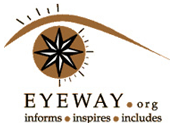Groups for differently-abled persons share their views on how to make the polling booths more disabled-friendly
Elections after elections, orthopedically-challenged K. Selvi would crawl to the polling booth at a government school in Vadakkarai near Red Hills. At the 2019 Lok Sabha elections, the polling booth became a little less inaccessible, as it offered her a wheelchair. However, without a volunteer to push the wheelchair, Selvi’s sister ended up doing it, while holding her eight-month-old baby.
At the 2019 LS polls, 36-year-old K. Alamelu crawled towards the booth, only to discover her name was not on the voters’ list. No wheelchair. No volunteers to push the chair. Over all of these, the polling officials were not helpful. She returned home without casting her vote.
The visually-impaired have their litany of problems.
Aruna Devi, honorary member, Society for the Rights of All Women with Disabilities (in Alwarpet) underlines how party symbols are not found on Braille-enabled ballot paper.
The Braille–enabled ballot paper has the serial number, party name and the contesting candidate’s name, but not the party symbol. The symbol has the quickest recall, especially among the unlettered,” says Aruna, emphasising that this remains a long-standing request.
S. Vanaja, president of Visually-Impaired Women’s Association (in Kundrathur) says the Braille-enabled ballot paper should be well-embossed.
“In the 2019 LS elections, I felt the Braille-enabled ballot paper to be a bit blunt and I had difficulty identifying the party I wanted to vote for,” says Vanaja, a resident of Amnjikarai.
Vaishnavi Jayakumar, member, Disability Rights Alliance, India, says those unlettered in Braille would seek someone else’s support, which in turn compromises voting privacy. An alternative ensuring privacy should be found, says Vaishnavi.
The deaf and deaf-mute see the need for a sign language specialist.
As having a sign language specialist at every booth is impractical, a pre-recorded video of a sign language specialist explaining the steps in casting the vote could be arranged, in both Tamil and English,” says public relations officer, The Association for The Deaf.
D. Gnana Bharathi, president, Spinal Injured Persons Association, underscores the need for ramps meeting standards prescribed by Election Commission of India (ECI). According to ECI’s website, the inclination ratio of a ramp should be 1:10 and not more than 1:14. An evenly-levelled ground for easy movement of the wheelchair is another necessity. Gnana Bharathi points out how well-meaning bystanders can cause harm when they push the wheelchairs unsafely causing the wheelchair-bound to fall. Hence the need for well-trained
volunteers.
Conveyance arrangements should be made for the differently-abled, says Vaishnavi Jayakumar, adding that the vehicles should be accessible and user-friendly.
More awareness campaigns to instil confidence in voters who are differently-abled, are required, especially in rural areas, points out K. Raghuraman, Karna Vidya Foundation (in Guindy) which works with the differently-abled.
Smitha Sadasivan, an accessibility consultant with ECI, that ECI’s rules indicate a dedicated parking lot for persons with disability. In a queue, the differently-abled get priority. ECI should ensure these rules are followed.
Vaishnavi suggests ECI conduct demonstrations for first-time voters who are differently-abled.
Source: https://www.thehindu.com/news/cities/chennai/making-elections-accessible/article34081088.ece

Facebook comments